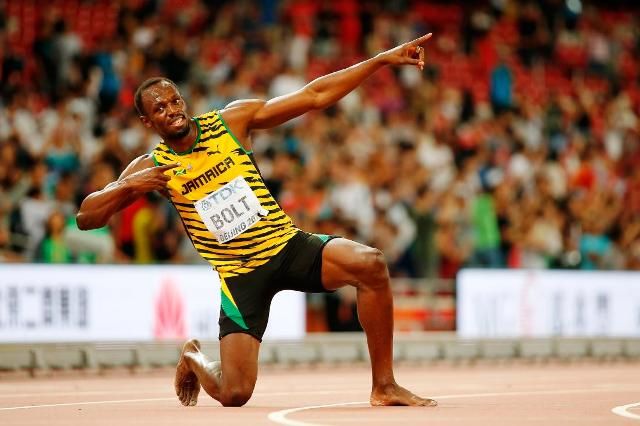Famous Athlete's Trigger Finger: A Career-Threatening Injury?

Famous Athlete's Trigger Finger: A Career-Threatening Injury?. Discover more detailed and exciting information on our website. Click the link below to start your adventure: Visit Best Website. Don't miss out!
Table of Contents
Famous Athlete's Trigger Finger: A Career-Threatening Injury?
The sporting world watched with bated breath as news broke about [Famous Athlete's Name], the renowned [Athlete's Sport] star, suffering from trigger finger. This seemingly minor ailment, affecting the tendons in the hand, poses a significant, and potentially career-threatening, risk to athletes relying on fine motor skills and explosive power. Could this common condition sideline a champion? Let's delve into the details.
Understanding Trigger Finger: More Than Just a Click
Trigger finger, or stenosing tenosynovitis, is a condition where one or more fingers become stuck in a bent position, often "locking" and snapping straight with a painful click. This happens due to inflammation of the tendon sheath, a protective layer surrounding the tendons responsible for finger movement. While it can affect anyone, repetitive strain injuries common in many sports make athletes particularly susceptible. For [Famous Athlete's Name], whose career hinges on [Specific athletic skill requiring hand dexterity, e.g., precise grip, powerful throws, delicate touch], the implications are substantial.
How Trigger Finger Impacts Athletic Performance
The impact of trigger finger on athletic performance varies depending on the severity and the athlete's sport. For [Famous Athlete's Name], the affected finger is crucial for [Specific athletic action]. Here's how trigger finger can disrupt their game:
- Loss of Grip Strength: A critical element in [Athlete's Sport], a weakened grip can dramatically impact performance, affecting everything from shot accuracy (basketball, golf) to racquet control (tennis, badminton).
- Reduced Power and Speed: The inability to fully extend the affected finger can hinder the generation of maximum power during crucial movements. This is particularly relevant to [Athlete's Sport] where [Explain specific example, e.g., a powerful serve is essential in tennis].
- Pain and Discomfort: The constant pain associated with trigger finger can affect an athlete's concentration and overall performance, impacting endurance and stamina.
- Limited Range of Motion: This can severely impact the athlete's ability to perform intricate movements necessary in their sport, decreasing agility and precision.
Treatment Options and Recovery Time
Fortunately, trigger finger is treatable. Common treatment options include:
- Conservative Management: This usually involves rest, splinting, medication (NSAIDs for pain and inflammation), and corticosteroid injections to reduce swelling.
- Surgery: In more severe cases, surgery might be necessary to release the constricted tendon sheath, allowing for smoother finger movement. Recovery time post-surgery can range from several weeks to months, depending on the individual and the extent of the procedure.
For [Famous Athlete's Name], the choice of treatment will depend on the severity of the condition and their specific needs. The timeline for a full return to competitive play remains uncertain, adding considerable anxiety for fans and the athlete alike.
The Future for [Famous Athlete's Name]
The news about [Famous Athlete's Name]'s trigger finger serves as a reminder that even seemingly minor injuries can have a significant impact on an athlete's career. While a full recovery is possible, the road to regaining peak performance might be long and challenging. We will continue to monitor the situation and update you as more information becomes available. Stay tuned for further updates on [Famous Athlete's Name]'s condition and recovery progress. Share your thoughts and well wishes for a speedy recovery in the comments below!

Thank you for visiting our website wich cover about Famous Athlete's Trigger Finger: A Career-Threatening Injury?. We hope the information provided has been useful to you. Feel free to contact us if you have any questions or need further assistance. See you next time and dont miss to bookmark.
Featured Posts
-
 Le Roi Jean Boucle Son Cinquieme Vendee Globe Analyse De Sa Performance
Feb 05, 2025
Le Roi Jean Boucle Son Cinquieme Vendee Globe Analyse De Sa Performance
Feb 05, 2025 -
 Meurtre A Livry Gargan Un Jeune Homme Poignarde En Pleine Rue
Feb 05, 2025
Meurtre A Livry Gargan Un Jeune Homme Poignarde En Pleine Rue
Feb 05, 2025 -
 Mort Suspecte A Seine Saint Denis Un Homme De 27 Ans La Police Enquete
Feb 05, 2025
Mort Suspecte A Seine Saint Denis Un Homme De 27 Ans La Police Enquete
Feb 05, 2025 -
 Finding The Perfect Spanish Equivalent For Your Name
Feb 05, 2025
Finding The Perfect Spanish Equivalent For Your Name
Feb 05, 2025 -
 A Conversation With Alex Hanan
Feb 05, 2025
A Conversation With Alex Hanan
Feb 05, 2025
